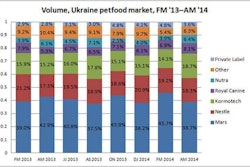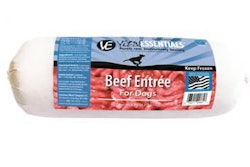See if you can follow along with this sordid saga of petfood marketing battles: Hill’s Pet Nutrition fired the first salvo by challenging some of Blue Buffalo Co.’s petfood marketing claims through the National Advertising Division (NAD), the investigative unit of the US’s self-regulating advertising industry. Consequently, NAD recommended in March of this year that Blue Buffalo modify some of its claims to avoid disparaging competitors, with Blue Buffalo vowing to appeal some of NAD’s findings.
Nestlé Purina PetCare seemingly picked up Hill’s banner by suing Blue Buffalo for false advertising, disparagement and “unjust enrichment”—including violations of the US Federal Lanham Act—in May. Blue Buffalo promptly countersued for defamation, unfair competition, false advertising and violations of trade practice statutes.
Then everything went quiet on the Western front, presumably while each side in the Purina-Blue Buffalo showdown started its due diligence on the competing lawsuits. The summer remained fairly serene until the last week of August, when the National Advertising Review Board (NARB)—to which Blue Buffalo had appealed some of the NAD recommendations—also recommended that the company modify its advertising. (NARB is considered the appellate unit of the advertising industry.)
This time around, it was recommended that Blue Buffalo modify its advertisements to avoid any express or implied messages that competing petfood companies are “fooling” or otherwise misleading consumers, and modify its online “True Blue Test” comparison chart, similarly to what NAD had recommended in the first place. Not surprisingly, Blue Buffalo “respectfully disagreed” with the findings.
Just when you might think the fast-growing petfood manufacturer was bearing the brunt of the US advertising industry’s criticism, along comes a new NAD statement. This time the target is none other than Hill’s, getting its paw slapped for violating NAD/NARB procedures with an outreach campaign to bloggers about the recommendations against Blue Buffalo.
Specifically, NAD charges that Hill’s PR firm, Burston-Marsteller, sent an “article starter kit” to bloggers that included a sample blog post, a fact sheet on Hill’s products and a series of links to the NAD and NARB press releases and articles written about the Hill’s-Blue Buffalo dispute, the new NAD release says.
“Self-regulation is a voluntary process; participating companies agree at the outset that decisions will not be used for promotional purposes,” the NAD release continues. “Effective self-regulation requires that participants adhere to both the letter and the spirit of the self-regulatory system.”
Well! But in the end, will any of this mean anything or lead to any changes in how petfoods are marketed or regulated? More importantly, do petfood-buying consumers care?
Other than making for interesting chatter at industry events, keeping lawyers and marketing executives employed (and yes, giving us bloggers something to write about), the bottom line is whether pet owners keep buying the products these companies put on retail shelves. Yes, marketing and advertising can and do influence purchasing decisions, including for petfood, but so do many other factors.
















